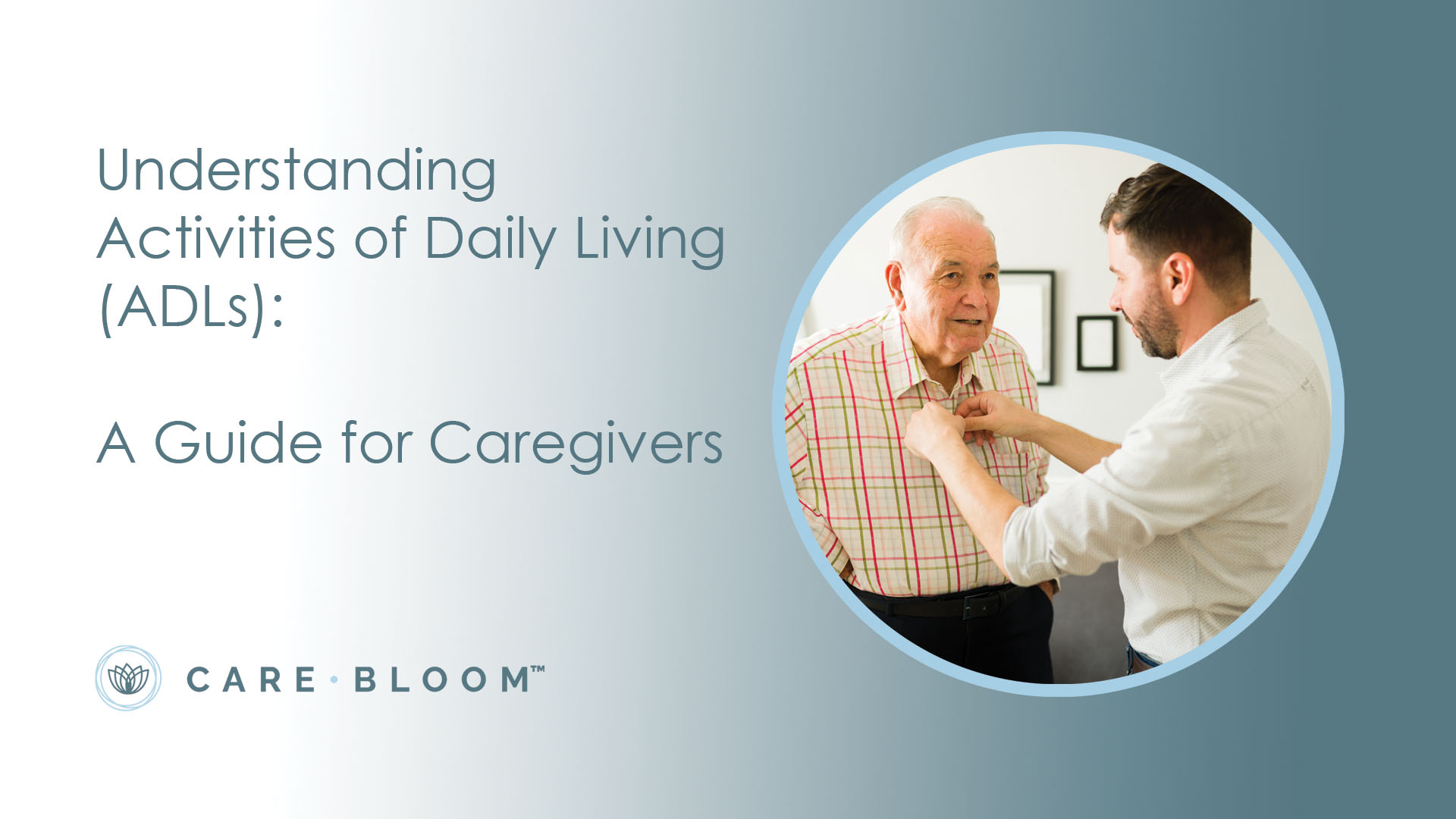Caregiver Blog
When caring for a loved one, understanding their ability to perform Activities of Daily Living (ADLs) is crucial. ADLs are the essential tasks a person must complete each day to maintain independence and overall well-being. Tracking these activities helps determine when assistance is needed and ensures that your loved one receives the proper level of care.
What Are ADLs?
ADLs fall into two main categories:
- Basic ADLs – Fundamental tasks required for personal care and daily functioning: Bathing, Dressing, Grooming (brushing hair, teeth, shaving, etc.), Toileting, Eating, Mobility (walking, transferring from bed to chair, etc.)
- Instrumental ADLs (IADLs) – More complex tasks necessary for independent living: Managing medications, Preparing meals, Housekeeping, Transportation, Handling finances, Shopping for groceries and necessities
Why Are ADLs Important?
Assessing a loved one’s ability to manage ADLs helps caregivers and medical professionals determine their level of independence. It also plays a key role in deciding whether home care, assisted living, or other interventions are necessary.
Encouraging Independence in ADLs
Maintaining autonomy is essential for a person’s dignity and mental well-being. Encourage your loved one to:
- Continue handling tasks they can safely perform.
- Use adaptive tools (grab bars, shower chairs, dressing aids, etc.) to promote independence.
- Follow a structured daily routine to reinforce habit formation.
When is ADL Intervention Needed?
If you notice any of the following, it may be time for additional support:
- Unexplained weight loss or poor hygiene
- Increased confusion or forgetfulness about daily tasks
- Difficulty getting out of bed or navigating the home safely
- Missed medication doses or inability to manage health conditions
- Increased risk of falls
How to Assist with ADLs
Providing assistance doesn’t mean taking over completely. Instead, help in a way that encourages independence:
- Offer gentle reminders for personal hygiene and grooming.
- Provide mobility aids like walkers or canes.
- Assist with dressing by laying out clothing or using adaptive clothing.
- Use visual schedules or alarms for medication and meals.
- Make the home environment safer and more accessible.
When to Bring in Professional Help
If caregiving becomes overwhelming or your loved one needs specialized care, hiring a home health aide or transitioning to assisted living might be necessary. Professional caregivers can assist with bathing, mobility, and medication management, ensuring safety and comfort.
Tracking and Managing ADLs with Care Bloom
Care Bloom is a tool that can help caregivers monitor ADLs effectively. It provides:
- ADL Tracking & Verification – Offers a clear picture of what tasks your loved one is completing independently and where they need assistance.
- Reminders & Alerts – Sends notifications to ensure ADLs are completed on time.
- Home Health Aide Monitoring – Ensures professional caregivers are fulfilling their responsibilities while assisting with ADLs.
By using Care Bloom, caregivers gain a real-time understanding of their loved one’s daily routine and can make informed decisions about their care needs.
Conclusion
ADLs are a key component of caregiving, and tracking them effectively can enhance the quality of care provided. Whether you are helping a loved one maintain independence or transitioning them to more structured care, tools like Care Bloom can provide peace of mind and ensure their well-being.
If you are a family caregiver, start monitoring ADLs today to ensure your loved one is getting the support they need—exactly when they need it!
